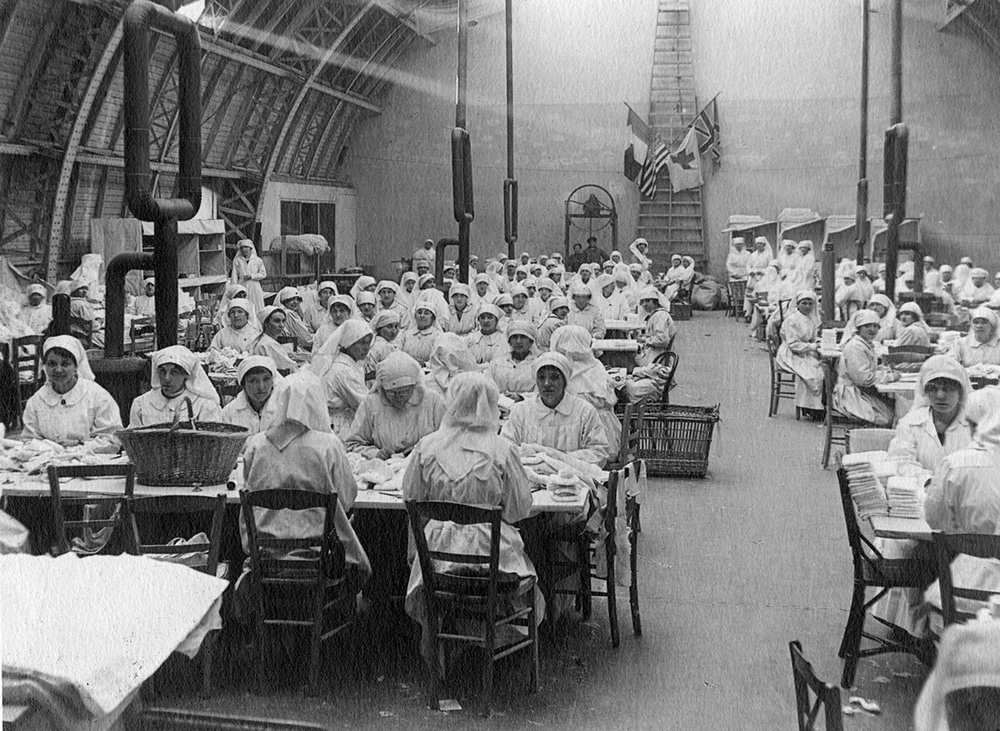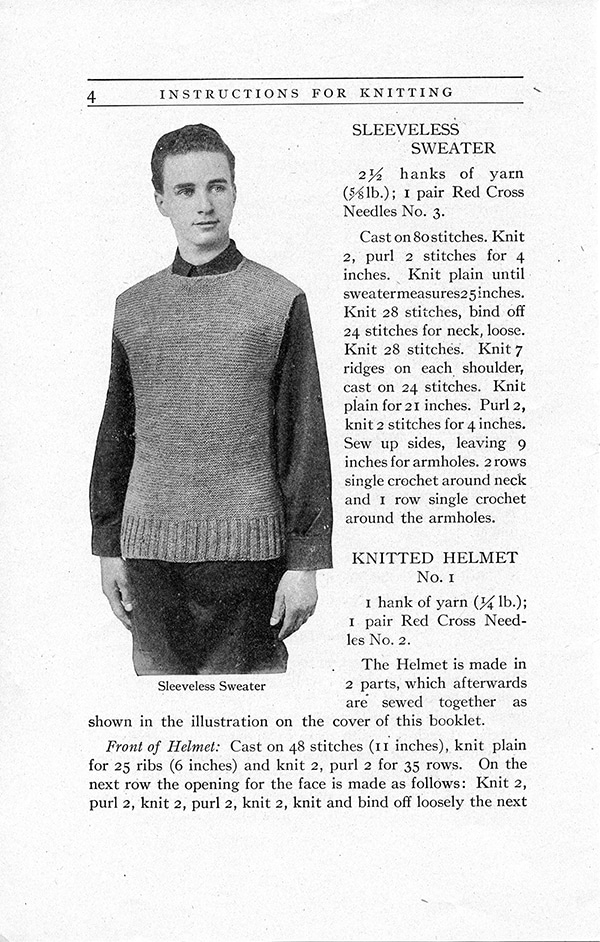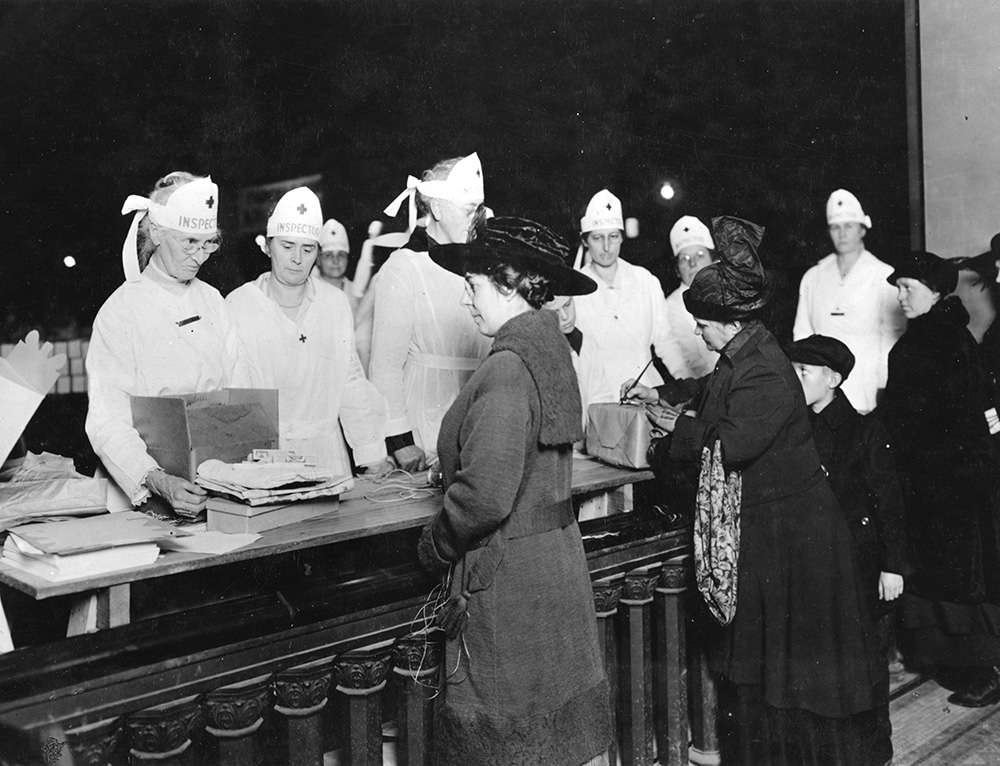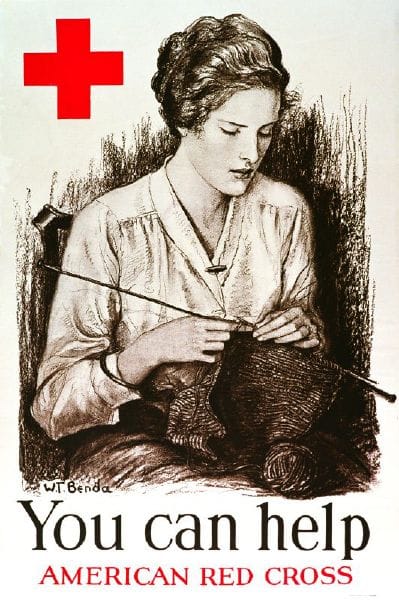When the United States officially entered the Great War on April 6, 1917, it had been raging in Europe since the summer of 1914. Bound by its government charter to support the U.S. military, the Red Cross was championed by President Woodrow Wilson as he called upon the American people to back the organization in its support of thousands of young men heading to the battlefields of Europe.
Since the start of the war, the Red Cross had been providing relief to worn-torn European countries first with doctors, nurses, and medical supplies on the SS Red Cross or Mercy Ship and later with hospital garments, surgical bandages, and refugee clothing, sent to sister Red Cross societies, and produced by women recruited through The Women’s Bureau of the Red Cross. The Production Corps started in 1916 as a result of these early relief efforts.
With the U.S. entry into the war, the Production Corps services expanded and encompassed the active U.S. military. Other services that developed during the war effort included hospital service, camp, canteen, motor corps, and home service. But, the Production Corps was ultimately the most popular. It didn’t require any special training and tasks were accomplished quickly.
The Army and Navy regularly requested thousands of surgical dressings and what were referred to as “comfort” items for their men. Comfort items included hand-knitted socks, sweaters, soap and razors. Between 1917 and 1919, over 8 million chapter women along with many Junior Red Cross members produced over 370 million relief articles for the Allied armed forces and civilians in Europe.
During the post-war period, the Production Corps continued its work as a peacetime operation. Volunteers made thousands of comfort items and surgical dressings for hospitalized service men and veterans, as well as for soldiers at remote military outposts or Navy stations. The role of the Production Corps was formalized in 1920, and it became one of the nine units in which volunteers could serve.
Today, the Red Cross still has Production Rooms in service, which carry out similar services for active duty military members, veterans and disaster victims.






